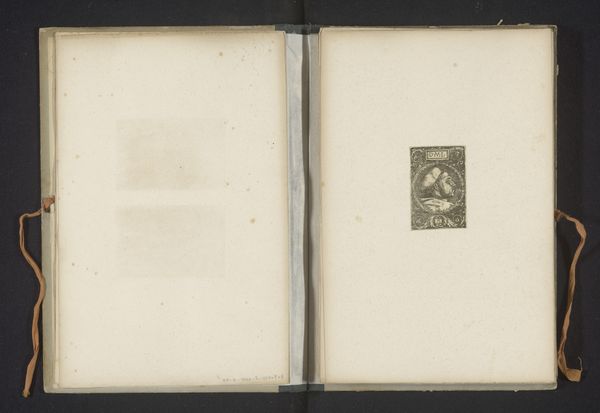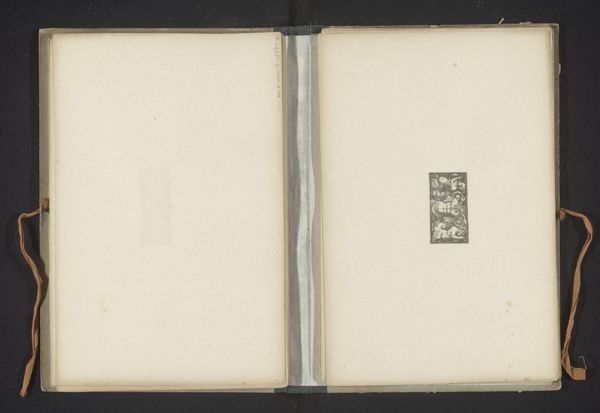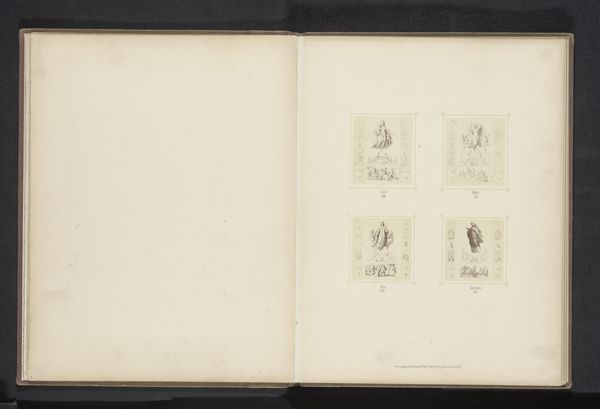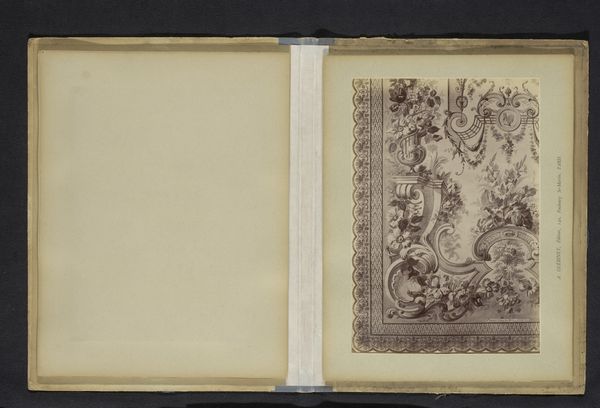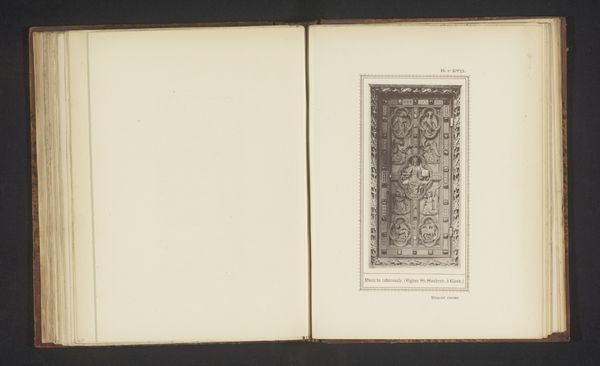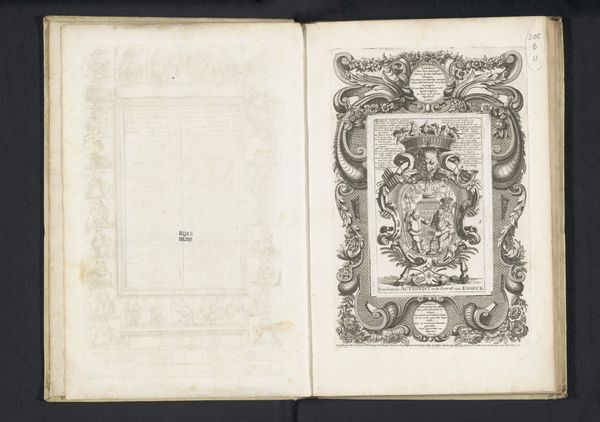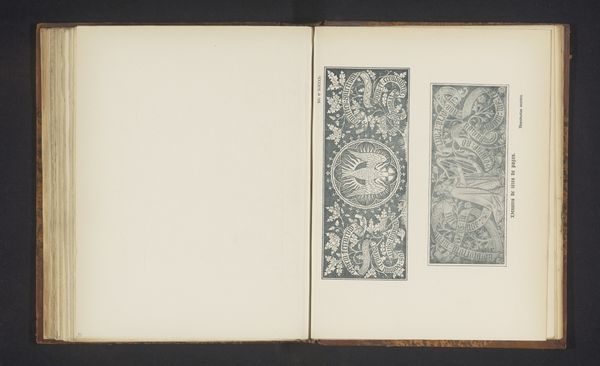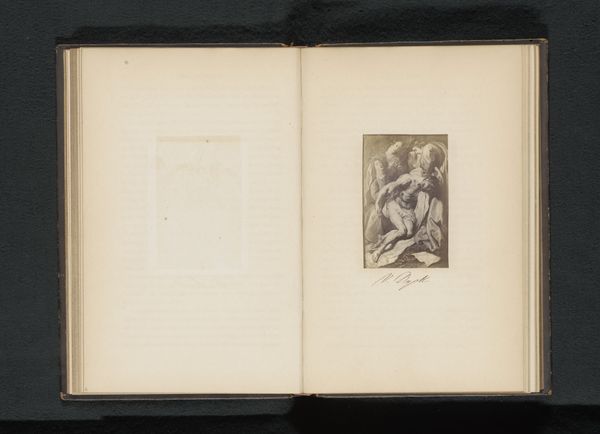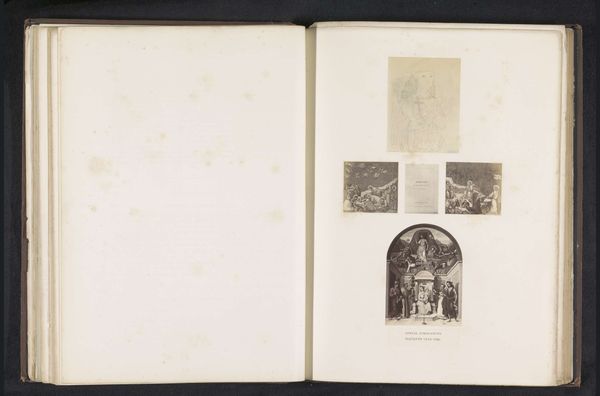
Reproductie van een prent van vier vrouwelijke allegorische figuren, Hoop, Rampspoed, Afgunst en Tolerantie, door Monogrammist IB before 1871
0:00
0:00
simonautoovey
Rijksmuseum
print, paper, engraving
#
allegory
#
ink paper printed
# print
#
paper
#
history-painting
#
engraving
Dimensions: height 148 mm, width 84 mm
Copyright: Rijks Museum: Open Domain
Editor: Here we have "Reproductie van een prent van vier vrouwelijke allegorische figuren, Hoop, Rampspoed, Afgunst en Tolerantie, door Monogrammist IB," a print from before 1871. The artwork, which uses engraving on paper, seems to depict an intricate allegorical scene framed with ornamentation. What narratives can you extract from this historical piece? Curator: What strikes me most are those very allegorical figures and their representations of abstract concepts in human form. Given its creation date, what societal structures do you think the artist sought to challenge or uphold through these symbols? Think about the power dynamics, the gender roles assigned, and whose voices are present or conspicuously absent. Editor: Well, given it's from before 1871, it's easy to imagine traditional values being reinforced. It also feels like a pretty conventional way of using women in art at that time. Curator: Precisely. It would be interesting to analyse how these allegories played into the broader political and social landscape. Consider the period’s concept of "womanhood" and whether these depictions challenge or reinforce expectations. How are they tools for or against patriarchal structures? Where can we locate points of resistance? Editor: So, it's not just about identifying the figures but also understanding how their depiction served certain social functions, right? Curator: Exactly. Also consider, who would have been viewing these images? How does it speak to that particular audience, and does it, perhaps, exclude or judge other audiences? We must ask whose version of events is prioritized within the visual text. Editor: I see your point! Looking closer, this isn't a straightforward, neutral image, but actively participates in a conversation—or perhaps, silences some voices—about the world around it. Thank you. Curator: Of course! This way of reading artwork encourages a much more historically and culturally responsible interaction, going beyond what it simply represents on its surface.
Comments
No comments
Be the first to comment and join the conversation on the ultimate creative platform.


